1A2 Key Phone Systems
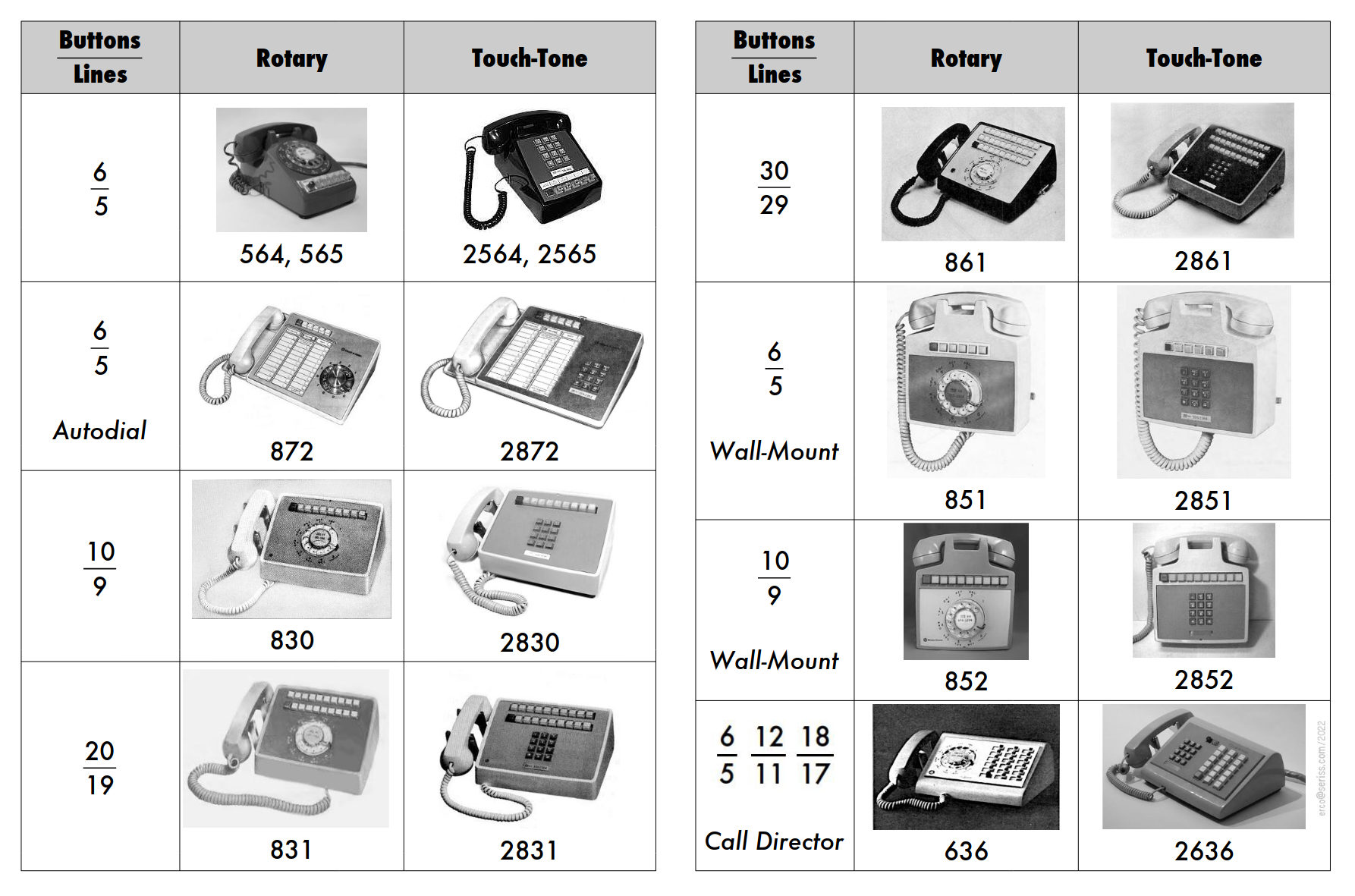
Table of common 1A2 Key System phone model#'s

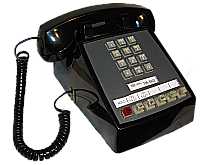
|
Model 2564 - 5 Line Touch-Tone PhoneThis phone is often referred to as a '6 button' phone; one hold button and 5 line buttons. The phone's cable is a standard 25 pair (50 pin) male Amphenol. Phone includes a built-in bell ringer (rings on ~90 VAC/20 - 30Hz) and buzzer (~10 VAC/60Hz) that have their own dedicated wire pairs. The 2564 is very similar to the 2565, but does not support speakerphone; subsequently the violet pairs are not present on the WE 2564 cables, keeping the station cable lighter and more flexible by having less conductors. Also, the 2564 has all the LG (Lamp Ground) conductors bussed together inside the set, whereas the 2565 has LG signals isolated (not bussed).
|
| 2564 |
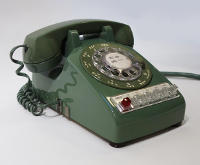
|
Model 565 - 5 Line Rotary PhoneSimilar to the 2565, but rotary. This phone predated Touch-Tone technology, the rotary dial briefly interrupting the current flow across the tip and ring pair to directly drive the central office's solenoid switching equipment to count out dialed numbers on strowger switches. This phone is often referred to as a '6 button' phone; one hold button and 5 line buttons. The phone's cable is a standard 25 pair (50 pin) male Amphenol, with unused wires usually spared out inside the phone. Both the 565 (rotary) and 2565 (Touch Tone) support speakerphone options, and include all the violet pairs for this purpose. Phone includes a built-in bell ringer (rings on ~90 VAC/20 - 30Hz) and buzzer (~10 VAC/60Hz) that have their own dedicated wire pairs. The 565 is similar to the 564, but supports 4a speakerphone option with all violet pairs, whereas the 564 does not. Also, in the 565 and 2565, all LG (Lamp Ground) signals are isolated, and not bussed inside the phone.
|
| 565 |
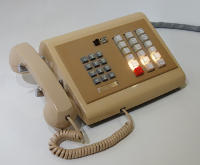
|
"Call Director" Model 2636 - 17 Line Touch-Tone PhoneThis is a Touch-Tone version of the older rotary 536 Call Director. These models are relatively small (compared to the 2830) given how many lines they manage. These phones were intended for receptionists, or situations where more than 5 lines are needed. These phones often showed up in movies, politics Johnson / Reagan / Bush , and numerous television shows made in the 1960's and 1970's.
(credit: In the above, "Politics" photos from www.manufacturediscontinued.com) |
| 2636 |
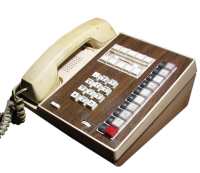
|
Com Key 416 - Multiline PhonesThis phone is not a 1A2 system, but it is from the same era. Com Key 416 is a 4A phone system that was released in 1975, and has many features the older 1A2 phones don't have. The Com Key 416 phones are standalone-alone system that don't use a KSU, and are not at all wiring compatible with 1A2.
|
| Com Key 416 |
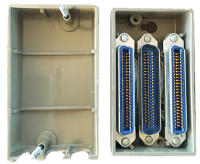
|
KS-19252-L1 "C-P-C" Amphenol BridgeThis device is not a phone, but used for connecting multiple 1A2 phones in parallel on a single 25 pair wire run by chaining M-F ended 25pair cables using these boxes at each point where a phone needs to be.The device itself has a single male plug connector ("P") surrounded by two female connectors ("C"), making it possible to chain these devices with M-F cables. The M-F cable would started at the KSU, its male end attached to the KSU's female connector, and the female end would connect to the center connector on this device. The male-ended phone connector would connect to one of the female connectors on the device, the other being available for another M-F cable to chain on to the next device. See the wiring diagram on this page for an example of how to use these. They are also used for chaining ComKey416 phones.
|
|
KS-19252-L1 C-P-C |
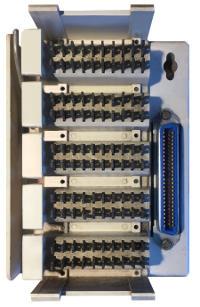
|
66E3-25 Connection BlockThis device is not a phone, but used for wall or floor mounting connection points for 1A2 phones. 25 pair cables run through walls can be terminated at one of these "decorative" blocks by punching down the wire on the block, and connecting the phone to the pre-wired amphenol connector on the block, and then putting the decorative cover over the assembly, making for a nice termination point.These blocks can also be chained; the punch block provides secondary lugs to chain to the next phone connection point. In this way raw 25pair cable without amphenols can be used to connect the blocks together behind walls or through ceilings/floors in an office or residence. See the diagrams on this page for examples of how these flexible blocks can be utilized.
|
| 66E3-25 |